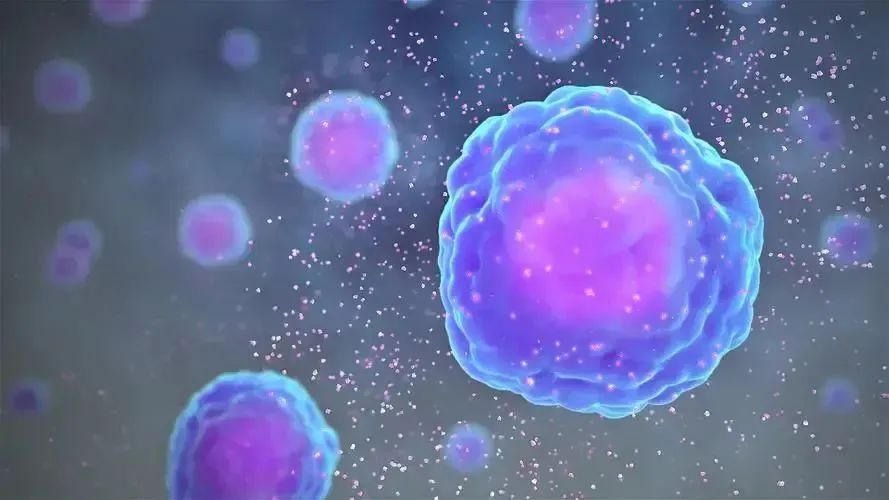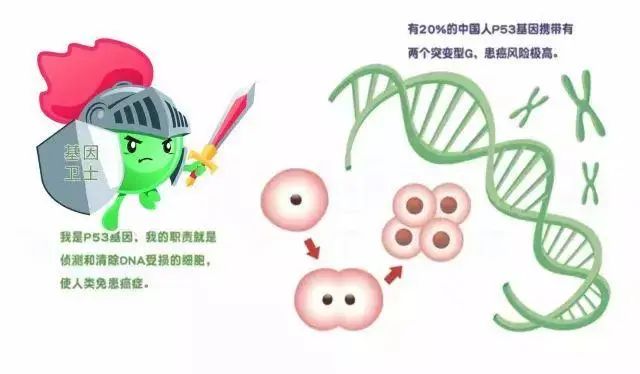How long does it take from "inflammation" to "cancer"?
Auntie Li has been working in the community since she retired. However, in recent times, her daughter found that Auntie Li has reduced the frequency of going out and is not in a good mood.
The daughter asked Auntie Li about the situation. It turned out that she felt a little pain in her feet. The daughter wanted to persuade Auntie Li to go to the hospital for examination, but was rejected. Auntie Li thought it was just a small problem, maybe there was some small inflammation in the body, and she didn't want to go to the hospital. She felt that going to the hospital not only had to wait in line, but also cost a lot of money, so she wanted to take medicine at home.
After the daughter knew her idea, she firmly disagreed and claimed that if the inflammation was not treated in time, it might turn into cancer.
Auntie Li felt that the child was making a fuss. Can a simple inflammation really develop into cancer?
We rarely associate the words "inflammation" and "cancer" together
In the eyes of most of us, inflammation is the symptom that occurs when the body is attacked by bacteria, viruses or other harmful substances. Our wounds may show symptoms such as redness, swelling, pain, and fever, but as long as we take some medicine, we can recover quickly. With the help of modern medicine, it will not bring extremely serious consequences. However, more and more scientific studies have shown that there is a connection between the two that cannot be ignored.
An article published in "Nature Genetics" shows that there is a close connection between inflammation and cancer.

In our human body, there is a p53 gene. It is an important cancer suppressor gene responsible for protecting the integrity of the cell's genome. If the p53 gene mutates, the cell loses this protection, making the cell more susceptible to cancer. According to existing clinical data, about half of cancer patients carry p53 gene mutations.
In addition, scientific research has also found that long-term chronic inflammation may cause DNA damage and cell mutations. These mutated cells may proliferate uncontrollably and eventually form tumors. This process may take years or even decades. About 20% of cancers are related to chronic inflammation.
Pay attention to inflammation
Inflammation may be happening in our bodies without our knowledge. It is like an invisible war. It is not only the body's defense response to various stimuli, but also an invisible killer of our health.
If inflammation cannot be controlled in time or it lasts too long, it may cause damage or disease to the body. Therefore, we should not ignore it, but pay attention to it and take effective measures to control it.
What is DNA?
DNA is what is commonly called gene. It is a DNA or RNA fragment with genetic effects, also known as genetic factor. Genes express the genetic information they carry by guiding the synthesis of proteins, thereby controlling the expression of the characteristics of biological individuals. The existence and decline of some life forms are determined by genes;
Genes not only determine the genetic characteristics of the human body, but also play an important role in the occurrence and development of diseases. Except for trauma, all diseases are caused by the interaction between genes (internal factors) and the environment (external factors);
Genes support the basic structure and performance of life. They store all the information about the race, blood type, gestation, growth, apoptosis and other processes of life. Genes - determine our birth, aging, illness and death.

Cancer and Gene Therapy
Cancer is a type of genetic disease. Almost all cancers are caused by gene mutations. P53 gene mutation is an important link, which is why traditional treatment methods are not ideal. Cancer is not just one disease, but a general term for more than 200 different diseases. Scientists try to find the commonalities of these cancers at the genetic level, so as to prescribe the right medicine for the disease. However, general genes usually only involve some commonalities, and only P53 can involve all of them.
Gene therapy refers to biomedical treatment based on changing human genetic material. It is to introduce normal human genes or therapeutic DNA sequences into human target cells in a certain way to correct gene defects or play a therapeutic role. Therefore, gene therapy targets the root cause of the disease - the abnormal gene itself.
The p53 gene is the first tumor suppressor gene discovered by humans, and it is also the most famous tumor suppressor gene. The main function of the P53 protein encoded by the p53 gene is to repair DNA and prevent cell cancer. When the DNA damage is too large to be repaired, the P53 protein regulates cell programmed death. Therefore, the p53 gene is also called the "guardian of the genome."
The World Health Organization's International Agency for Research on Cancer believes that: "There must be a basic condition for cancer, that is, P53 is turned off. If P53 functions normally, cancer will not develop."
What is P53 gene therapy
P53 gene therapy
P53 gene therapy is an advanced therapy that inhibits tumor angiogenesis, repairs damaged DNA, prevents tumor recurrence and metastasis, promotes deep hibernation of necrotic cells, and improves the body's own immune function.
P53 gene mechanism of action
- Repair damaged DNA to prevent cell cancer
P53 tumor suppressor gene can regulate the growth of tobacco cells in the S phase and G1 phase to prevent cell cancer
- Programmed cell death or severe hibernation state of tumor cells
Can specifically cause programmed cell death of tumor cells or put tumor cells in a severe hibernation state without damaging normal cells
- Upregulate the activity of multiple anti-cancer genes and downregulate the activity of multiple oncogenes
It is the key "genetic cell protector" in cells and has the activity of upregulating multiple anti-cancer genes and downregulating multiple oncogenes
- Inhibit vascular endothelial growth factor gene
It has the effect of inhibiting the expression of vascular endothelial growth factor (VEGF) gene and multidrug resistance (MDR) gene, thereby enhancing its anti-cancer effect in a cascade manner.

P53 gene safety
Safety of p53 gene drugs
In the 26-year study of this gene at home and abroad, no adverse effects on human cells were observed.
Safety of adenovirus vectors
The vector is derived from the first generation of human adenovirus type 5, which is the weakest virus strain among adenoviruses. The wild type of this virus strain only occasionally causes the common cold; the vector gene is not integrated into the host cell genome and has no genetic toxicity; the vector is genetically engineered and only infects cells once, cannot replicate, and has no environmental pollution. The production requirements must meet the relevant standards of the State Food and Drug Administration.
P53 gene drugs can be used to prevent recurrence after surgery and are also of special significance for the treatment of type II diabetes:
1. It has an irreplaceable role in the prevention and treatment of cancer, prevention of recurrence, and prevention of metastasis.
2. Due to the role of the P53 gene in glucose metabolism, it has special significance for the treatment of type II diabetes.
3. P53 plays an irreplaceable role in the repair of cardiovascular arterial plaques and vascular endothelium.
Inflammation and cancer are not terrible. As long as we can maintain good living habits and a healthy mentality, we can effectively control inflammation and prevent it from developing into cancer, making life healthier and better!






